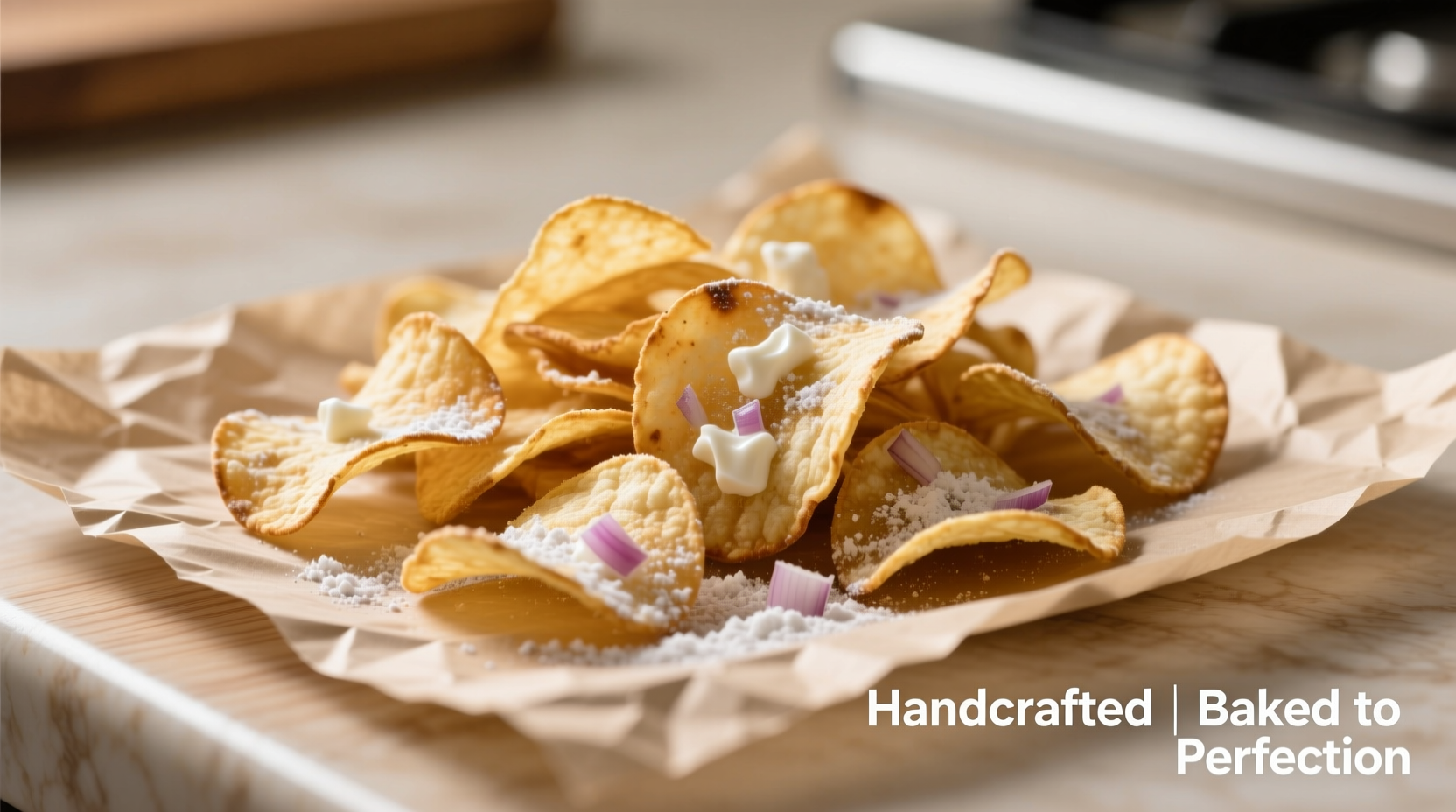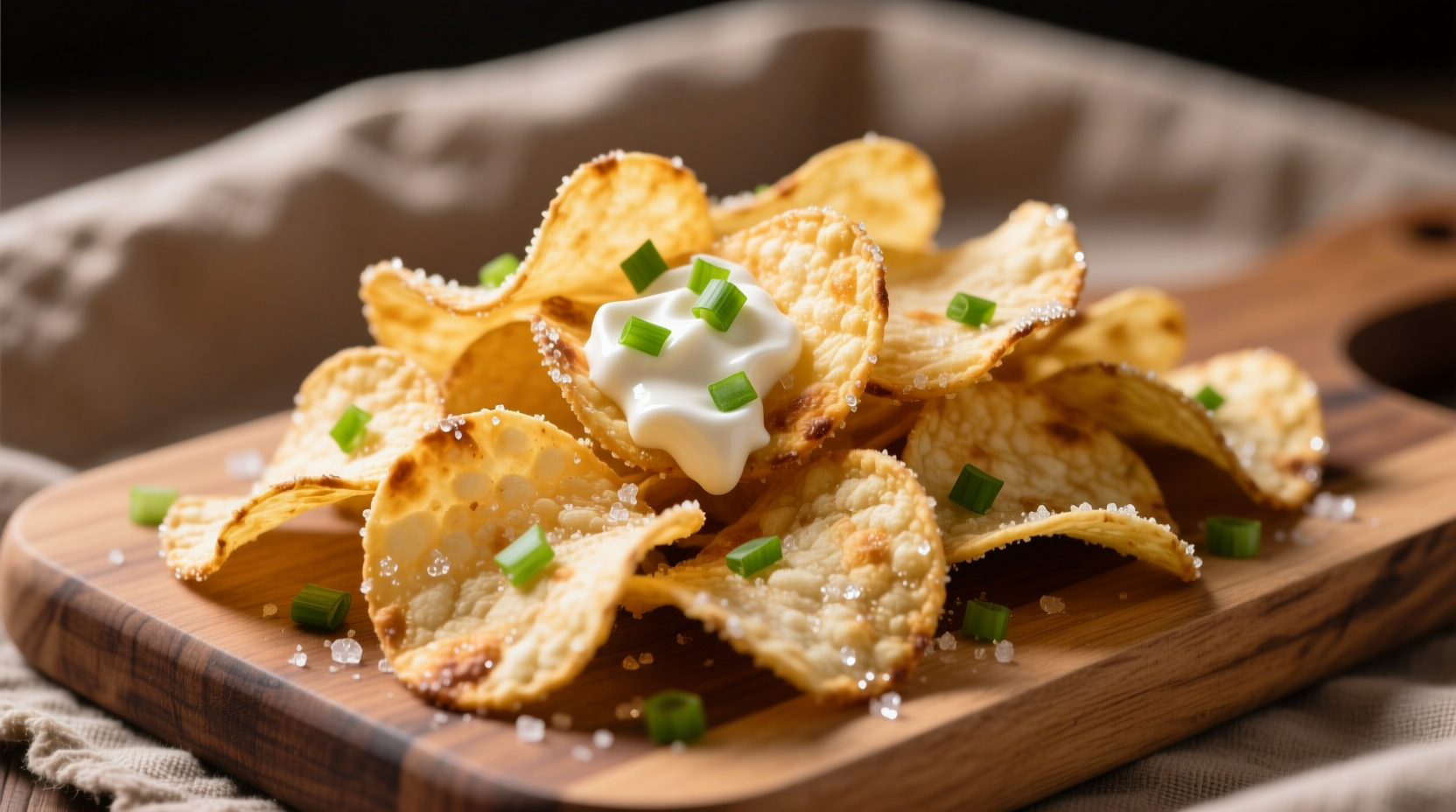The Evolution of Health-Conscious Snacking
When you reach for a bag of baked sour cream and onion chips, you're participating in a decades-long shift toward healthier snacking options. The journey from exclusively fried to baked alternatives began in the late 1980s when health concerns about dietary fat prompted food scientists to develop new preparation methods. Unlike their fried counterparts that absorb oil during cooking, baked chips undergo a dehydration process that significantly reduces fat content while preserving the beloved tangy flavor.
Understanding the Baking Process
The magic of baked sour cream and onion chips happens through precise temperature control and moisture management. Professional chefs like Antonio Rodriguez explain that baking chips at 375°F (190°C) for 15-20 minutes creates the perfect balance between crispness and flavor retention. The key difference lies in the cooking medium: while fried chips absorb 20-30% of their weight in oil, baked versions typically contain only 3-5% fat by weight.
| Nutritional Component | Baked Sour Cream & Onion Chips (1oz) | Fried Sour Cream & Onion Chips (1oz) |
|---|---|---|
| Total Fat | 3.5g | 10g |
| Saturated Fat | 0.5g | 1.5g |
| Calories | 120 | 150 |
| Sodium | 190mg | 170mg |
Source: USDA FoodData Central, 2023 nutritional analysis of commercial chip varieties
Flavor Science: Why Baked Chips Taste Different
The distinctive sour cream and onion flavor profile relies on specific chemical compounds that behave differently when baked versus fried. Research from the Institute of Food Technologists shows that the allium compounds in dehydrated onion powder and lactic acid in sour cream powder undergo different Maillard reaction patterns during baking. This explains why many consumers notice a slightly less intense but more nuanced flavor in baked versions.

Practical Guide to Perfect Baked Chips
Creating restaurant-quality baked sour cream and onion chips at home requires attention to three critical factors:
Potato Selection Matters
Russet potatoes provide the ideal starch content for crisp baked chips. Their higher solid content (22-24%) compared to waxy varieties (16-18%) means less moisture to evaporate during baking. Slice them uniformly at 1/16 inch thickness using a mandoline for consistent results.
Flavor Application Technique
Professional chefs recommend a two-step seasoning process:
- Spray chips lightly with olive oil mist before baking
- Apply seasoning immediately after baking while chips are still warm
This method prevents the seasoning from burning during baking while ensuring maximum adhesion.
Temperature Control Secrets
The critical temperature range for optimal chip crispness is 350-375°F (175-190°C). Exceeding 400°F causes rapid browning before moisture fully evaporates, resulting in chewy centers. For best results, rotate the baking sheet halfway through cooking and allow chips to cool completely on the sheet to finish crisping.
Commercial Product Considerations
When selecting store-bought baked sour cream and onion chips, check ingredient labels for these markers of quality:
- "Whole potato" as the first ingredient (not potato flakes or starch)
- Real dairy ingredients rather than "natural flavors"
- Avoid products with added sugars (common in many commercial varieties)
Consumer Reports testing revealed significant variation among brands, with top performers containing up to 30% less sodium than budget options while maintaining better flavor balance. The baking process creates inherent limitations—commercial baked chips typically have a shorter shelf life (3-4 weeks) compared to fried versions (8-12 weeks) due to lower fat content acting as a natural preservative.
When Baked Chips Fall Short
While baked sour cream and onion chips offer nutritional advantages, they're not universally superior. Food science research from Cornell University's Food and Brand Lab indicates that baked chips have different textural properties that some consumers find less satisfying. The absence of oil absorption creates a more brittle texture that lacks the mouth-coating quality of fried versions. For those seeking authentic diner-style flavor, traditional frying remains unmatched—but for health-conscious snacking between meals, baked versions deliver substantial benefits without complete flavor sacrifice.
Frequently Asked Questions
How much less fat do baked sour cream and onion chips contain compared to fried versions?
Baked sour cream and onion chips typically contain 3.5g of fat per 1oz serving compared to 10g in fried versions, representing approximately 65% less total fat according to USDA nutritional data.
Can I make baked sour cream and onion chips without a deep fryer?
Yes, you can make baked sour cream and onion chips using just a baking sheet and oven. Professional chefs recommend using parchment paper on a rimmed baking sheet at 375°F for 15-20 minutes, flipping halfway through for even crisping.
Why do baked chips sometimes taste different from fried versions?
The difference comes from the cooking process. Fried chips absorb oil which carries flavor compounds, while baked chips rely on surface seasoning. Food science research shows that the Maillard reaction occurs differently in baking, creating slightly less intense but more nuanced flavor profiles.
Do baked sour cream and onion chips have the same shelf life as fried chips?
No, baked chips typically have a shorter shelf life of 3-4 weeks compared to 8-12 weeks for fried versions. The lower fat content in baked chips provides less natural preservation, making them more susceptible to moisture absorption and staleness over time.











 浙公网安备
33010002000092号
浙公网安备
33010002000092号 浙B2-20120091-4
浙B2-20120091-4